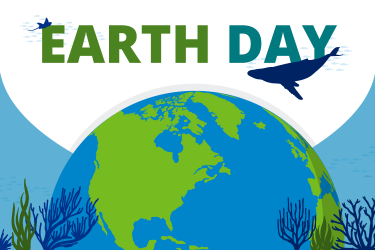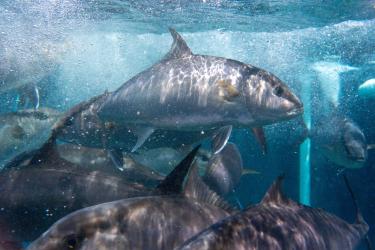In our never-ending quest to improve our knowledge of fisheries, we’re constantly looking for ways to build upon our solid scientific foundation of counting fish and providing operational information to decision-makers. Our next generation of stock assessments will look to improve upon our existing efforts by:
- Incorporating new ecosystem and environmental data to make our models more true-to-life.
- Using advanced technology to collect data more efficiently and with greater calibration.
- Streamlining data collection and analysis for quicker results.
- Prioritizing stock assessments for important species.
Conducting Stock Assessments in a Changing Environment
Stock assessments are, by necessity, simplified approximations of what’s happening in the real world. We simply can’t account for everything taking place in, on, or under the water. The key is knowing when a simpler set of data and models is good enough and when we must expand to include more factors. Historically, the approach has involved abundance, biological, and catch data. Now we are seeing a need to add environmental and ecosystem data to track changing conditions.
Changing ecosystems present a challenge for our fisheries science. For example, in 2011 the waters off New England were warmer than they’ve been in the past 150 years. We know from direct observation and by talking to fishermen that these warmer waters changed the distribution of some fish and their prey. What we don’t understand yet, but are investigating, are the potential long-term impacts of these changes on such factors as habitat, predator-prey relationships, and mortality and the subsequent impact of those changes on fish populations.
More future assessments will include environmental factors that affect fish stocks and our ability to consistently monitor these stocks. While we have to choose the data wisely, use of more complete data will improve our understanding of the complex dynamics between physical, biological, and oceanographic variables and help us better account for changing ecosystems.
Using Advanced Technologies to Assess Fish Stocks
In addition to expanding the type of data we collect and use, the next generation of assessments will benefit from the latest technology to gather those data more efficiently and accurately. Some midwater species, such as walleye pollock and Pacific hake, have been surveyed with sonar for many years, but advanced technology approaches have not been available for many other species. Ships—whether a NOAA research vessel or a chartered fishing boat—will continue to be our main research platforms, but we can expand our capabilities by using a number of promising new sonar, video, and other electronic technologies.
These technologies will complement, and may someday replace, parts of our existing data collections. We’ve already begun research and development on many new platforms for advanced sampling technology across all of our regions. View the slideshow for more information on some of the new sampling approaches being tested.
Getting Abundance, Biological, and Catch Information More Quickly
Some simple assessment data, such as total annual catch, actually come from massive amounts of raw data. As we include more data from varied sources, the task of handling the data efficiently becomes increasingly important. Improvements in handheld technologies have replaced manual data entry, and increased computing power allows us to process and store larger datasets. But it still takes a lot of time and resources to collect and analyze field data. Even after the data are processed, there are still numerous quality control and review processes.
Across NOAA Fisheries, we are taking steps to adopt more streamlined data systems to maintain a high level of quality and provide timely management advice. Without sacrificing scientific rigor or transparency, our next generation of assessments will benefit from more timely and efficient data collection and analysis.
Prioritizing Important Fisheries
In today’s fishery management—where expectations are high, timelines are short, and resources are limited—identifying priorities is critical. Ideally, we would provide high-quality, up-to-date assessments for all of the approximately 450 fish stocks under our management jurisdiction. However, through a prioritized approach, we can improve future stock assessments overall by using baseline monitoring for some fish stocks and comprehensive assessments for the region’s most important fisheries. We also can focus our extensive peer-review system on standardized methods so we can then apply these methods to quality-controlled data to produce more timely updates of assessments.
Some fish stocks are more valuable—economically, socially, or ecologically—than others. Frequent detailed and comprehensive assessments are needed to track their changes and forecast the largest possible available catch levels. Examples include fisheries such as New England cod, Alaskan pollock, and Gulf and South Atlantic red snapper.
We’re working with the Regional Fishery Management Councils and Interstate Marine Fisheries Commissions to create a framework to better prioritize our assessments within each region. Although this means we may not assess some stocks as often, we know that by targeting regionally important species, we’ll be putting our effort where it will do the most good.
Improving Fisheries Stock Assessments
Our 2001 Stock Assessment Improvement Plan was a landmark document that created the framework for our stock assessment enterprise as it exists today. An update of the Stock Assessment Improvement Plan is now underway and will serve as the foundation for our next-generation planning effort. Realizing our vision for the next generation of stock assessments will rely on a coordinated, multidisciplinary approach. From improved logistics and data processing infrastructure, to the adoption of innovative data collection technologies, to inclusion of new skillsets and decision-making frameworks, to improved communication of risk and uncertainty—our next generation of stock assessments will tap NOAA’s breadth of expertise. And this will allow us to meet the management and conservation needs of the future and allow our science to continue as a model for the rest of the world.
|
Electronic Monitoring and Reporting In 2013, NOAA Fisheries launched an initiative to evaluate emerging technologies to collect data with the goal of providing more timely, accurate, and cost-effective information. Smartphones, laptops, and tablets hold great promise for better data, better decision-making, and better fishing. But as helpful as these devices are, they will not eliminate the need for human observers. We are working with the Regional Fishery Management Councils, data partners, fishermen, and other stakeholders to develop a thoughtful approach to integrating emerging technologies into our data collections. |
|
What Makes a Fishery “Valuable?” We start by considering multiple factors to evaluate a stock’s value. One such factor is the importance of the fishery. Fishery importance might take into account the economic value of the resource to the region and cultural uses, but it also considers the urgency of incorporating new information related to the status of the stock, rebuilding deadlines, and changes in fishery operations or regulations. Another factor we consider is the importance of certain stocks to the ecosystem. Because marine food webs have many intricate links, the fate of one stock may have implications for others. The biology of certain species (for example, their longevity and the variability of the amount of young fish entering the population from year to year) should be taken into account when decisions are made about how frequently to assess a stock. Additionally, larger changes in the ecosystem may shift the balance of certain systems past important thresholds or to new states entirely. In these cases ecosystem models may help us realize when a major change is occurring, and if that change should be addressed in the stock assessment to improve management advice. |



